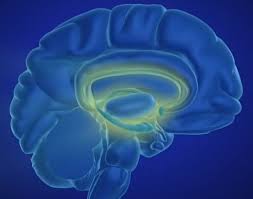As addiction professionals, we are becoming increasingly concerned about preteenagers and young adults’ involvement with substance abuse as a way of relieving stress and anger. The turbulent underdeveloped central nervous system, especially in the prefrontal cortex (PFC), provides impetus to not only continue important neuroimaging studies in both human and animal models, but also to encourage preventive measures and cautions embraced by governmental and social media outlets. It is well known that before people reach their 20s, PFC development is undergoing significant changes and, as such, hijacks appropriate decision making in this population. We are further proposing that early genetic testing for addiction risk alleles will offer important information that could potentially be utilized by their parents and caregivers prior to use of psychoactive drugs by these youth. Understandably, family history, parenting styles, and attachment may be modified by various reward genes, including the known bonding substances oxytocin/vasopressin, which effect dopaminergic function. Well-characterized neuroimaging studies continue to reflect region-specific differential responses to drugs and food (including other non-substance-addictive behaviors) via either “surfeit” or “deficit.” With this in mind, we hereby propose a “reward deficiency solution system” that combines early genetic risk diagnosis, medical monitoring, and nutrigenomic dopamine agonist modalities to combat this significant global dilemma that is preventing our youth from leading normal productive lives, which will in turn make them happier.
The term “Reward Deficiency Syndrome”(RDS) to describe addictive, impulsive disorders including alcoholism, attention deficit disorder, drug abuse and food bingeing, pathological gaming, internet addiction, sex addiction, having a common genetic basis acting as an umbrella term. See the below for a breakdown of these behaviors.
|
Addictive Behaviors |
Impulsive Behaviors |
Compulsive Behaviors |
Personality Disorders |
|
severe alcoholism |
attention-deficit disorder hyperactivity |
aberrant sexual behavior |
conduct disorder |
|
polysubstance abuse |
Tourette syndrome |
Internet gaming |
antisocial personality |
|
smoking |
autism |
pathological gambling |
aggressive behavior |
|
obesity |
Genetic testing to determine risk for RDS
Safe and Effective non-addictive Dopamine Agonist known as Synaptamine (KB220Z) to activate Dopaminergic pathways in the brain…
To date, the bottleneck is that typical pharmaceutical agents that have activation qualities are too powerful and have profound contraindications and side-effects. The good news is that the Dopaminergic system can be safely & effectively stimulated with a patented natural, non-addictive Dopamine Agonist known as Synaptamine (KB220Z). Neuroimaging tools such as (qEEG, fMRI and PET) have been used to demonstrate the impact and effectiveness of Synaptamine as a safe activator of brain reward Dopamine… (See La Vita Studies)
Ultimately, it should have benefits in the form of craving reduction, prevention of relapse, and quite possibly prevention of all RDS behaviors, especially in adolescents…
CONCLUSION
Finally, it should be stated just because you have a genetic predisposition does not mean you will automatically become an addict… As Steven Susman of the University of southern California points out, rather than being a victim to our genetic factors based on our DNA, RDS is highly impacted by environmental (epigenetic) factors affecting our RNA… The take home message is one is not doomed because of their genes to become addict, but definitely at high risk. This is why Synaptamine was invented so that a compound could possible reduce the cravings associated with RDS and other environmental and behavioral tool can be implemented so these genes are not activated or woken up.


